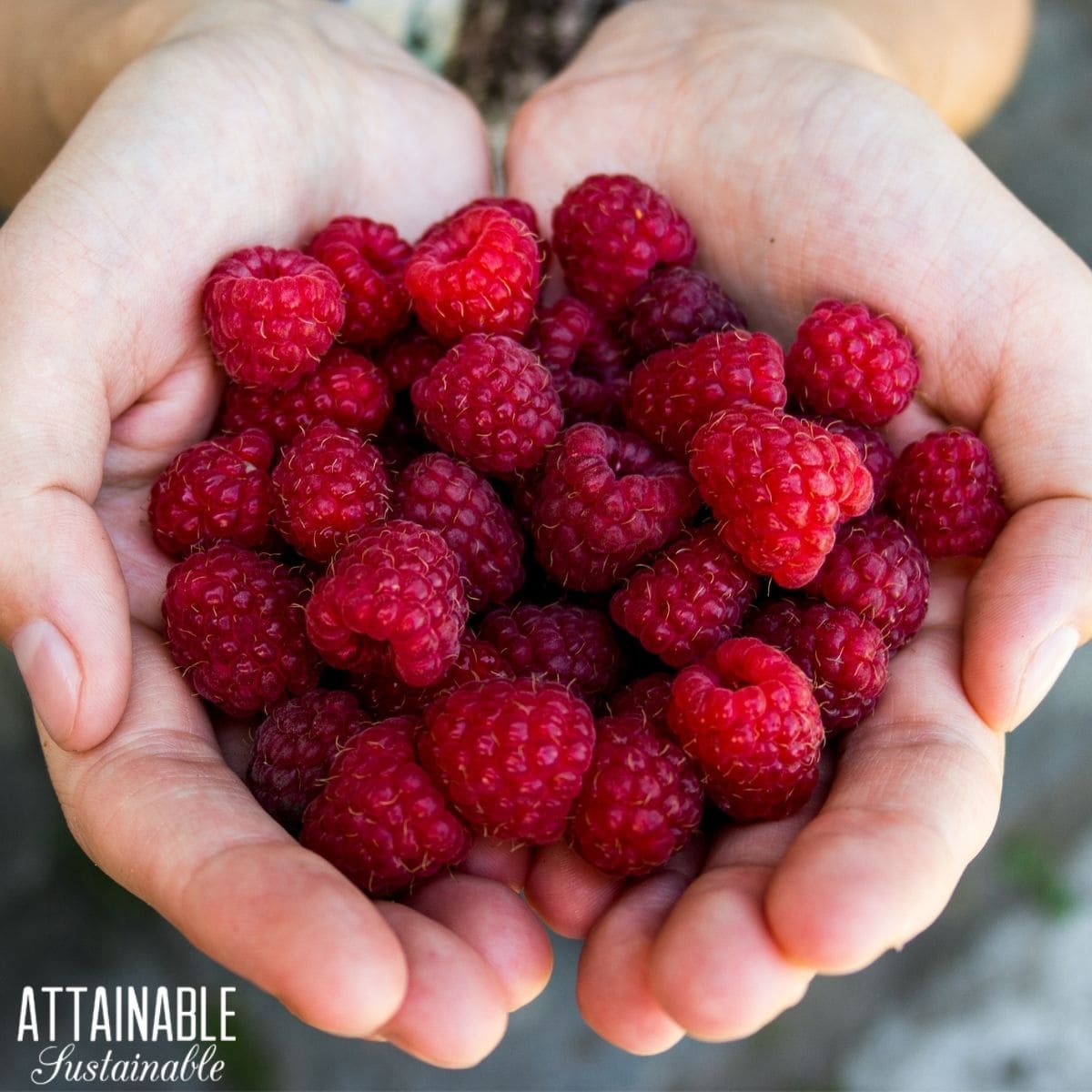Growing raspberries is a delicious way to dedicate some of your garden space. Contain raspberry brambles beautifully on a trellis, and harvest the berries from summer into fall depending on the variety you choose. Planting raspberries makes a tasty addition to your garden and is a perfect way to enjoy the taste of summer picked freshly from a backyard bramble!
Grow blueberries for another summer berry perfect for backyard growing!
Contributed by Jodi Torpey, author and Master Gardener.
Raspberries are fabulous fruits for home gardens
Raspberries are one of the most popular bramble fruits that gardeners grow. “Brambles” are simply thorny shrubs that belong to the rose family. While these perennial shrubs are known for their prickly stems, some newer varieties are spineless. All are valued for their sweet and juicy berries.
If you live in hardiness zones 2-9, you’ll be able to grow raspberries (Rubus spp.) with the right variety selection, planting site, and care. Take your time in choosing the kind of raspberries you want to grow and be sure to find the best site for planting. Raspberries can take up a lot of space and can grow and produce fruit for many years.
Because raspberries are perennial, the roots and crowns of plants re-grow each year; however, the above-ground canes are biennial and live for two years. For raspberries that produce fruit in summer, you might not get fruit until the second year. However new advances in plant breeding mean there are some ready-to-fruit plants on the market.
Grow Some Greens!
Ready to grow fresh greens, no matter WHERE you live? Sign up for my
FREE quick-start guide and start growing some of your own food!
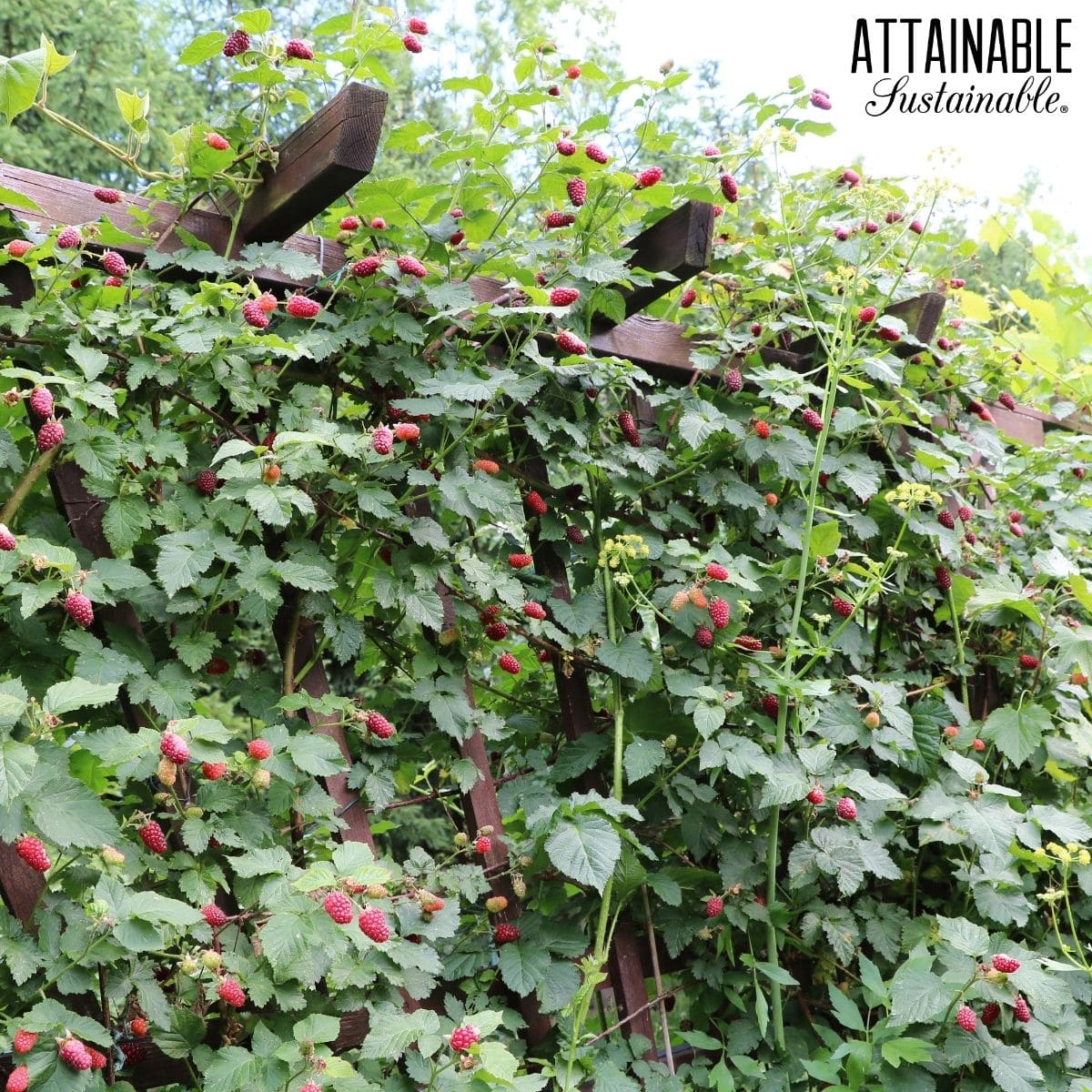
Raspberry brambles on a trellis
Growing raspberries
Plant raspberries in spring using a hedgerow style for planting. Space plants about 2 ½ – 3 feet apart with 4-8 feet between rows of raspberry plants. When planting, make sure the raspberry tap root is as deep as it was in its container.
To save garden space and keep canes healthy, train the stems to grow up a sturdy support or trellis system. Allow plants to fill in the hedgerow at the same distance as they were planted.
Raspberries have two growing types: summer-bearing and fall-bearing. Plant both types for a raspberry harvest that lasts across the summer into fall.
For summer-bearing varieties, new canes remain unpruned for the first year. After plants are established, prune canes after harvest. In spring, prune to remove the skinniest canes, leaving only the largest canes. In mid-summer, remove all the canes that flowered and produced fruit because they won’t produce fruit again.
For fall-bearing raspberry varieties, allow raspberries to produce fruit in the first year. In winter cut the old canes and new canes will grow in spring.
New to gardening? Limited on space? The 5-Gallon Garden gives you the skills you need to grow food in the space you have. Get started with your garden today!
Six raspberry varieties for home gardens
Here’s a selection of summer and fall raspberry varieties that will keep you in berries all season long:
Summer-bearing Varieties
Thornless Canby is a red mid-season raspberry with extra-large berries. The thornless nature of this raspberry variety makes picking painless; hardiness zones 5-8.
Mammoth Red thornless raspberry produces large red berries in late June; hardiness zones 3-7.
Latham is a mid-season raspberry that grows large, deep red fruits and is known as a reliable producer; hardiness zones 2-8.
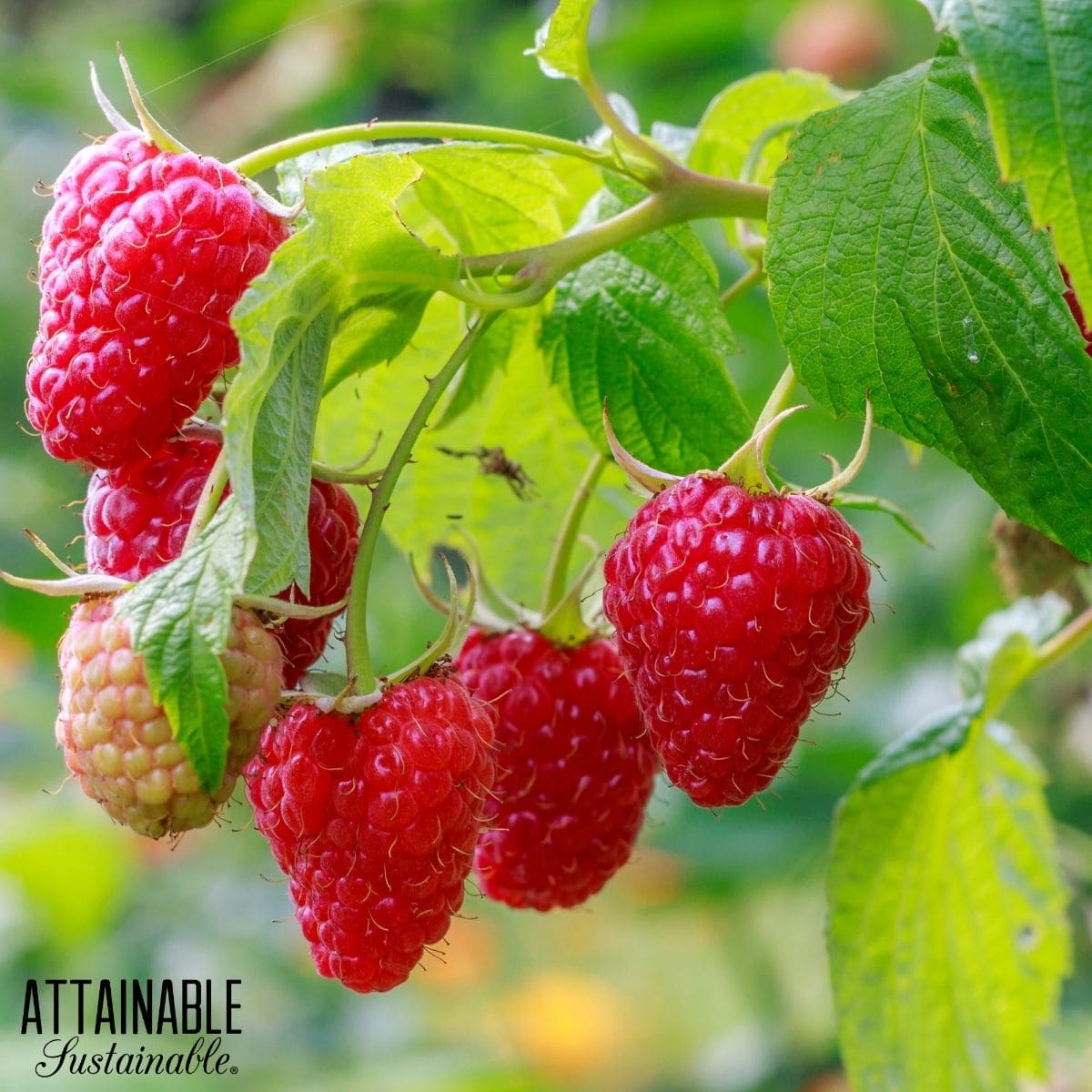
Raspberry varieties
Fall-bearing Varieties
Heritage is an everbearing variety that grows juicy red fruits. The canes typically need no support and produce two crops of berries each year; hardiness zones 4-8.
Fall Gold Raspberry is an everbearing variety that features yellow-gold berries. Canes are vigorous and productive; hardiness zones 4-8.
September Raspberry grows red, medium-size berries to harvest some in summer and bigger yields in September; hardiness zones 3-8.
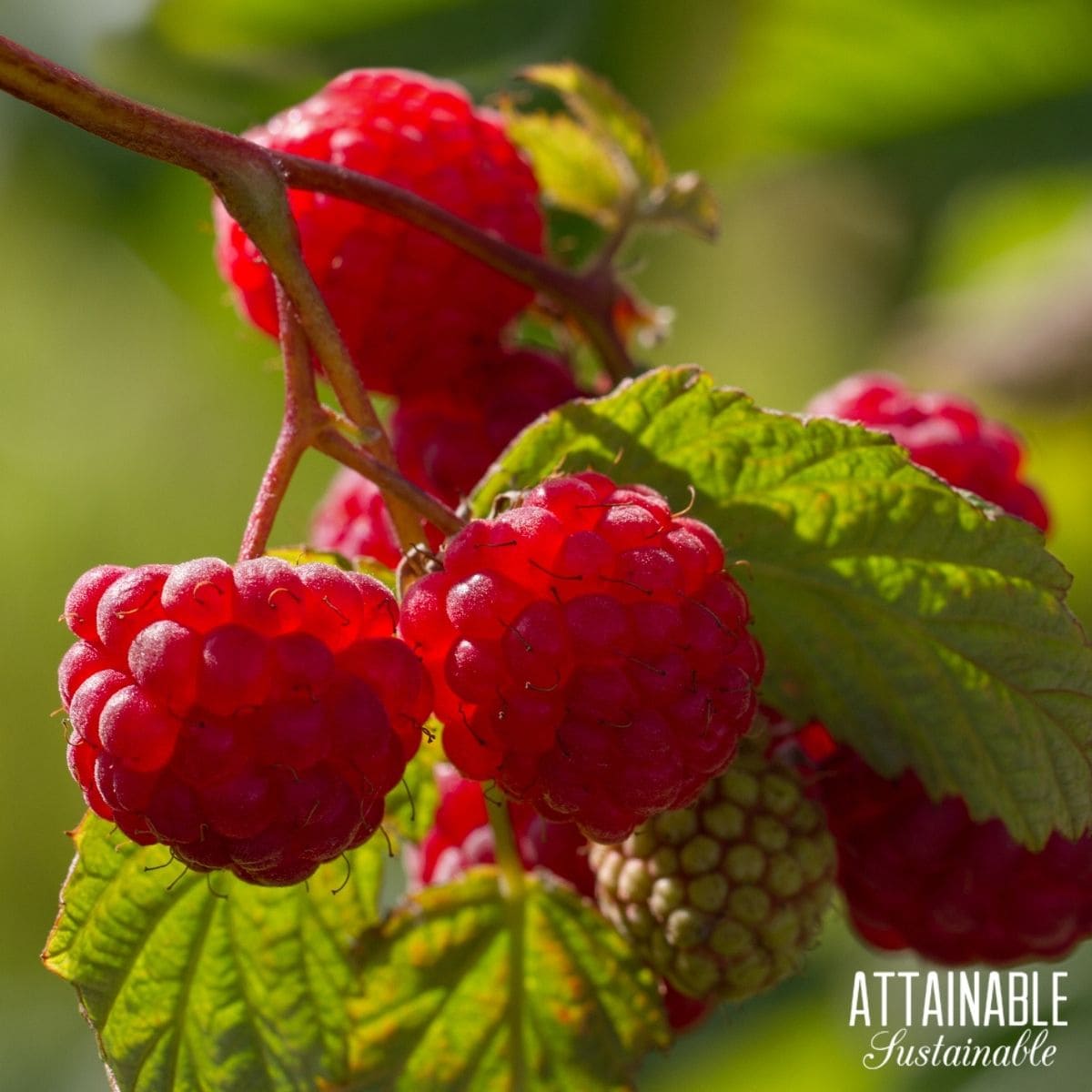
Raspberries growing in a sunny spot
Requirements for Growing Raspberries
Soil requirements
Raspberries need deep and well-draining soil, so before planting amend with compost or other organic matter, like well-aged manure.
After planting, add a layer of straw, wood chips or bark mulch to help maintain soil temperature and to keep weeds from popping up around plants.
Light requirements
Select a good-sized sunny and warm site for the raspberry shrubs. Read through the plant tags and descriptions for the varieties you’re planting; some raspberry plants can grow in partial shade.
Water and fertilizer requirements
Raspberries grow best when they are watered consistently, especially during hot weather. Add drip irrigation or a soaker hose to ensure good coverage. Keep up with deep watering to make sure raspberries receive at least 1 inch of water each week when the plants are flowering and fruiting. Adjust water to match the soil and season.
In spring, fertilize with a 12-12-12 type fertilizer and water in. Keep fertilizer away from the new shoots and canes.
Prevent raspberry problems
Buy and plant only healthy, virus-free raspberry plants to prevent problems. If you notice a decline in your raspberry plants, look for these issues:
Raspberry mosaic disease is a viral disease transmitted by aphids that shows up as a mottling from light to dark green leaf tissue. The tips of shoots may turn black and die. To prevent the raspberry mosaic virus, plant resistant types and control aphids with beneficial insects or blasts of water from the hose.
Verticillium wilt is a soilborne fungus with symptoms of wilt from the base up. This fungus occurs in cool wet weather and in soils that don’t drain well. Avoid planting raspberries where strawberries, tomatoes, potatoes, peppers, eggplants, squashes, melons, and raspberries were planted within the last four years. Amend the soil so it provides better drainage.
In addition, if you’re planting both red and black raspberries, make sure there is plenty of distance (about 300 feet) between these two types of raspberries to prevent plant diseases that are spread by insects.
Growing raspberries in containers
Raspberry plants used to be difficult to grow in containers because of their long canes, but new dwarf varieties make it easier. Look for raspberries, like ‘Shortcake’, that grows to only 3 feet tall. Full-size fruits grow on these short stalks and make harvesting berries a snap.
Prepare a large container with a rich, well-draining potting soil meant for container planting. Be sure to select a container that will support the plants and add a trellis at planting.
Mix in a slow-release fertilizer and place plants at the depth and spacing recommended for the variety. Water consistently to keep the soil moist, but not soggy. Harvest container raspberries as soon as they have detached from their hulls.
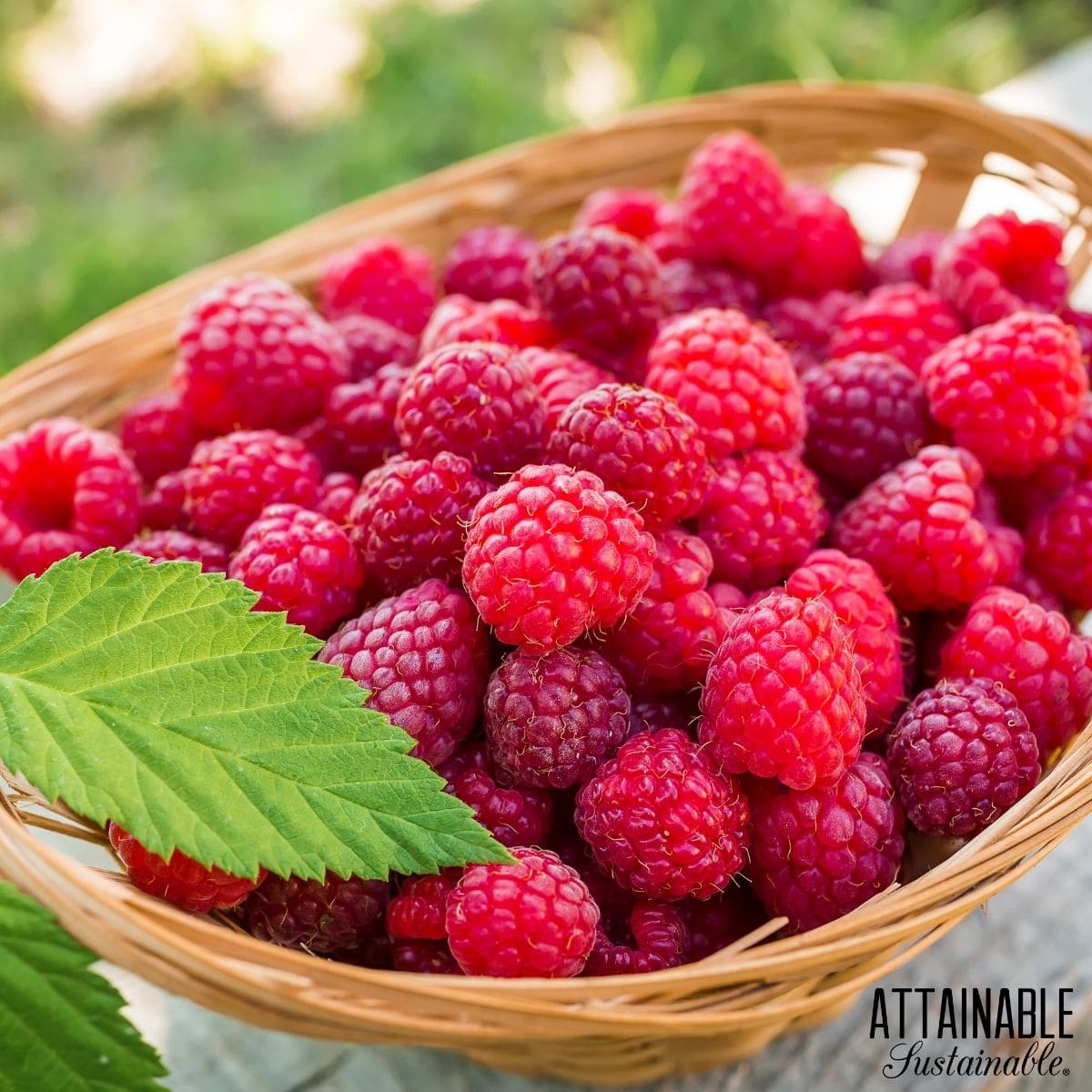
Harvesting raspberries
How to harvest raspberries
Harvest fruits when they’ve reached their mature size and color, and when they are easily released from their base. Look for brightly colored and plump raspberries without their hulls. The attached berries aren’t ready to pick and won’t be as sweet. Be sure to pick before berries become too soft or start to shrivel.
Birds might be attracted to ripening raspberries, so cover plants with netting that has tight crosswires so they can’t get trapped in the netting.
Store berries in the fridge in moisture-proof containers, in a single layer, if possible. Raspberries are delicate, so handle with care and gently rinse them right before serving or preparing them for recipes.
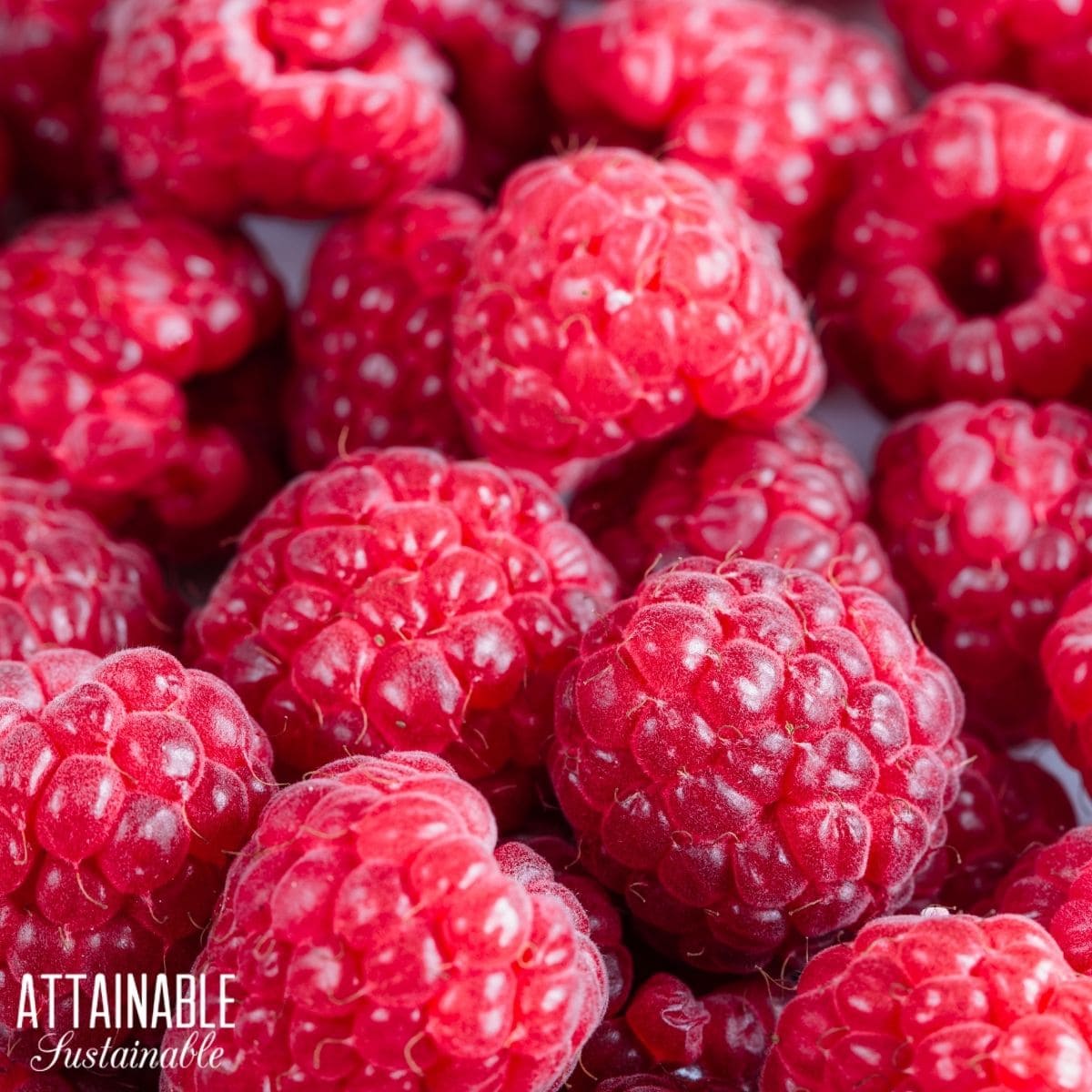
Eating raspberries
Using raspberries in the kitchen
Eat your raspberries as soon as you can after harvesting them. Enjoy fresh raspberries out of hand, sprinkled on cereals, blended into smoothies, served with cream as a dessert, made into jam, or freeze berries to enjoy later.
How to propagate raspberry plants
Propagate red raspberries with new shoots called suckers that develop from the roots of plants. Instead of pruning away these suckers, you can dig them up with a sharp spade. Use your hands to gently separate the suckers into individual plants and replant.

